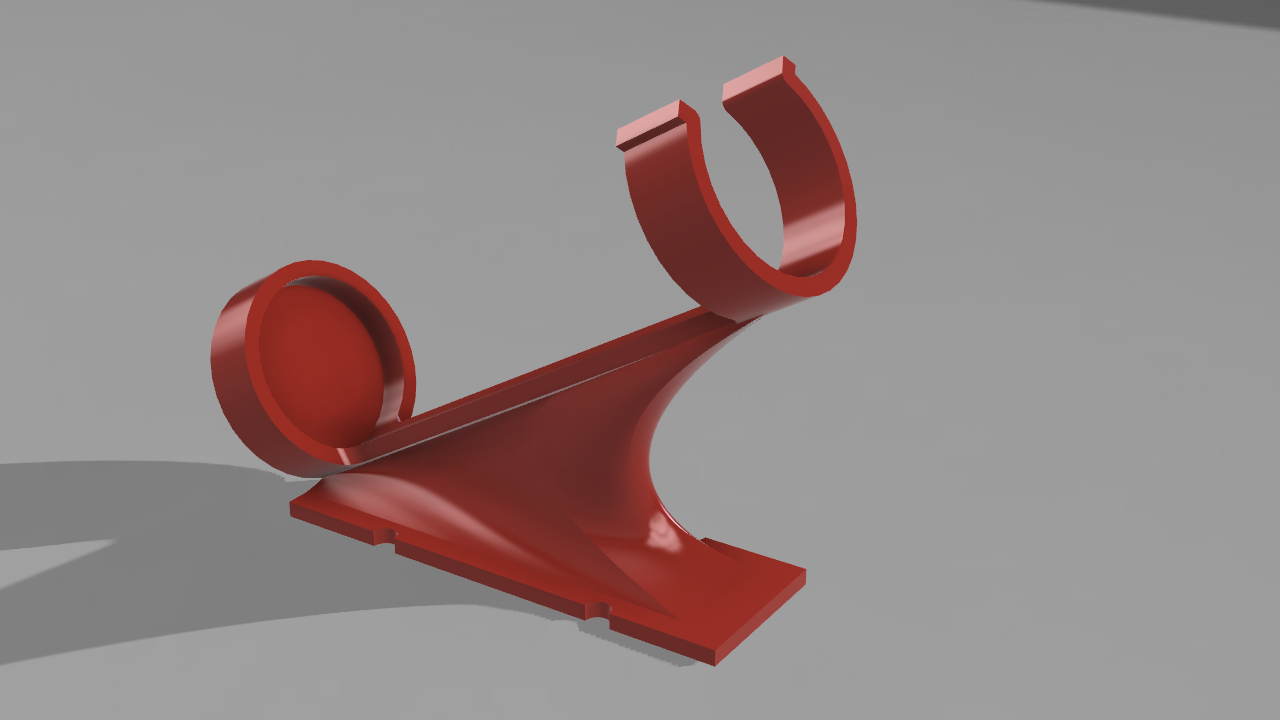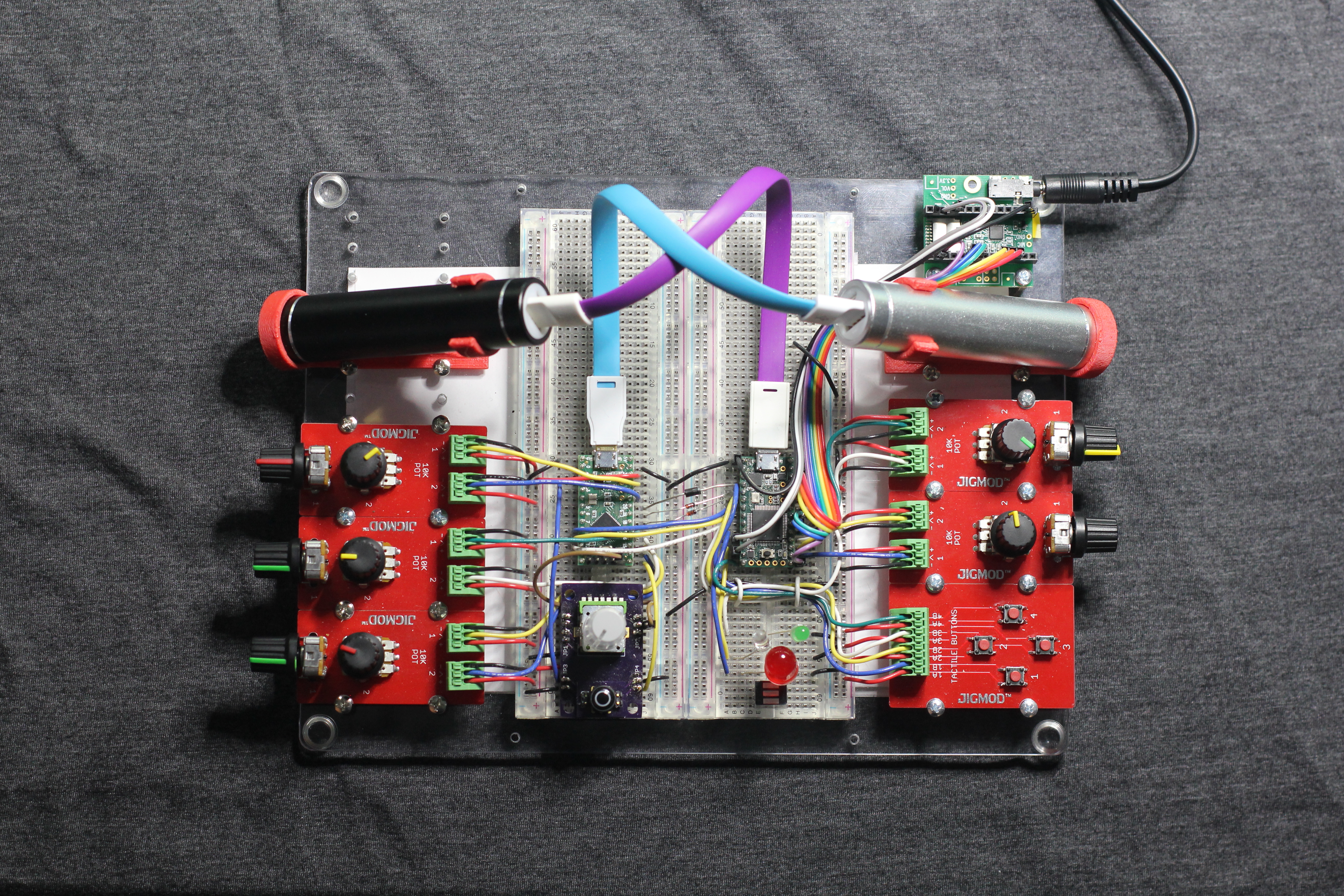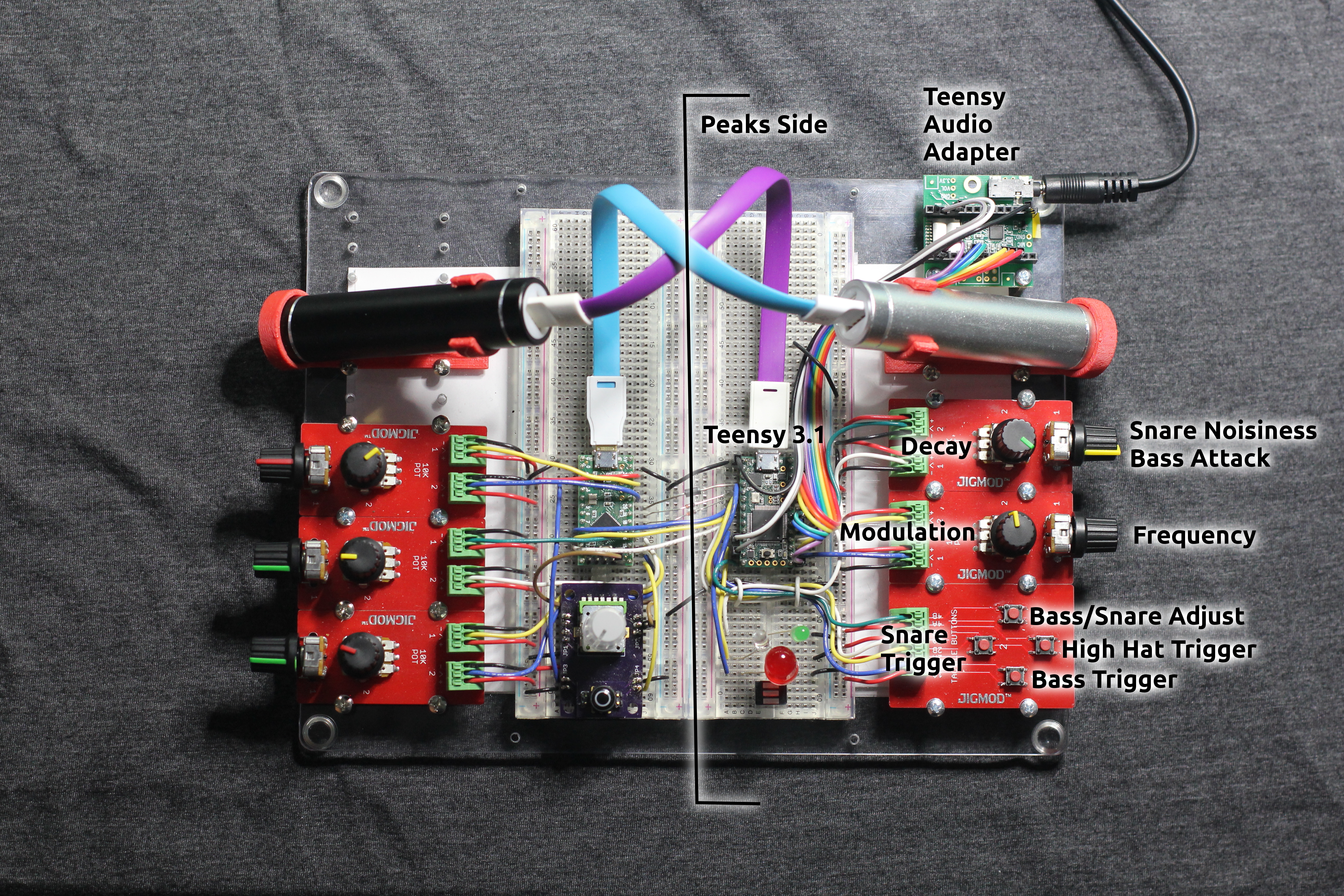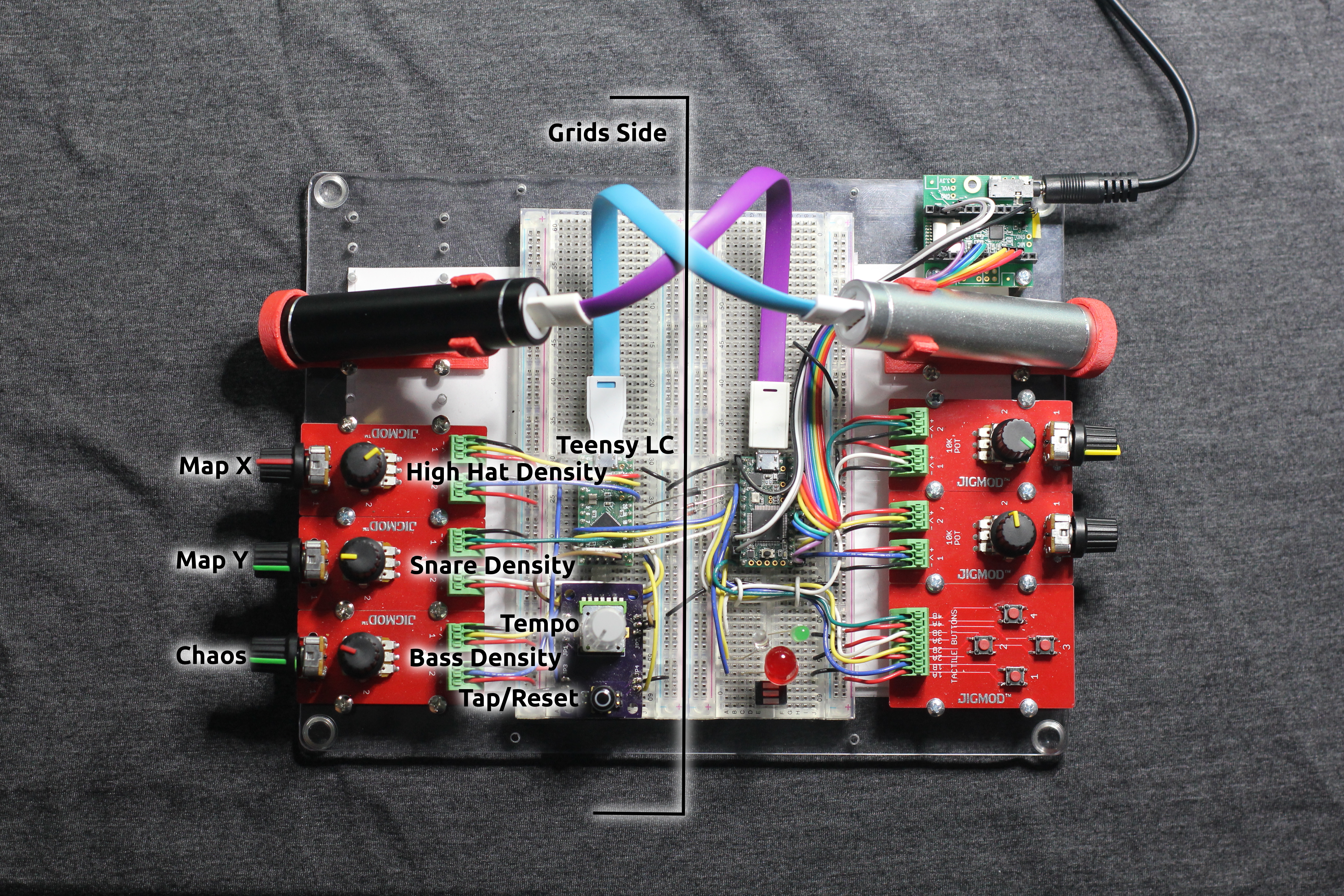I made this drum machine.
by kbob
In early May, I made this drum machine in three days. It came out pretty well for such a quick hack.
Update 2016-06-29: Added 3D printing time lapse video.
Just show me the video, already!
Okay. Here you go.
What the heck did I just see?
It’s a drum machine. I made it. It uses code from two of Mutable Instruments’ modules, two Teensy dev boards, and the JIGMOD prototyping system.
Day One: Battery Holders
The most important part of designing a new musical instrument is creating a suitable battery holder, so that’s where I started. I’ve been learning Fusion 360, so I used it. This was the first time I ever used lofting to join bodies.
Here’s Fusion 360’s timeline of the design. It ignores a lot of experiments and dead ends.

And here’s the obligatory 3D printer time lapse.
Day Two: JIGMOD and Drum Synth
JIGMOD
JIGMOD is a prototyping system based around breadboards. The base plate, the breadboards, and all the red PCBs on the sides are JIGMOD. I used a five dual-potentiometer JIGMODs and a quad-button JIGMOD. They’re all mounted on a JIGMOD XL platform.
I spent about 15 minutes screwing all the modules together, and somewhat longer wiring things up. The end result, though, is pretty rugged. I’ve been carrying it around for a month and a half, letting kids and adults play with it, and it hasn’t come apart. I like JIGMODs.
Peaks
Émilie Gillet of Mutable Instruments makes wonderful Eurorack modules. Even better, she publishes all her designs as open source.
One of those modules is Peaks. Peaks is primarily an envelope generator, but it also has a drum synth built in. The drum synth has three voices: bass, snare, and high hat. I started with the peaks source code and extracted those three synths.
The drum synth runs on the Teensy 3.1 on the right-hand breadboard. It receives triggers either from the button at the bottom right or from the left-hand Teensy. It also reads four potentiometers on the right side. It sends I2S signals to the Teensy Audio Adapter at the upper right corner. The audio board has a DAC and a headphone jack.
I hooked into the I2S interrupt. The interrupt service routine generates a single sample on every interrupt. That means 44.1 interrupts every millisecond. I love writing hard realtime code on microcontrollers…
While that’s going on, the main loop is continuously watching for triggers on three input lines. When a trigger comes in, the drum starts sounding on the next sample.
Once a millisecond, the main loop pauses to read one of the potentiometers. It checks them round-robin, so it reads each pot every 4 ms. If the pot has changed, the corresponding synth parameter is updated. The bass drum has four parameters: pitch, modulation, damping, and attack. The snare has pitch, modulation, damping, and noisiness — how loud the rattle is. The high hat has no parameters.
The fourth button switches the knobs between adjusting the bass and adjusting the snare.
There are also three LEDs at the bottom. They flash when each drum is triggered. They’re arranged to look vaguely like a drum set.
So the software is pretty straightforward. I’ve put it up on GitHub.
Day Three: Grids and Refinement
Grids
The other Mutable Instruments module is Grids. Mutable describes it as a “Topographic Drum Sequencer”. The idea is that there’s a 5×5 grid of rhythm sequences. You navigate through that map (topography) with X and Y controls to select a quartet of nearest rhythms to interpolate within. It sounds weird, and it is, but the upshot is that you have two knobs to twist, and either one will change the module’s rhythm in a semi-random but still musical way1. A big twist makes a big change, and a small tweak makes a subtle change.
Grids runs on the Teensy LC on the left side. It reads seven knobs. It outputs trigger and accent signals to the drum synth on the other Teensy. It also has a Tap/Reset button and matching LED. The LED blinks on the downbeat. I never figured out what the button does. The firmware may not be reading it correctly.
For the Grids subsystem, I simply ported Émilie’s Grids firmware to the Teensy. I set up my own pin mapping, initialization, and low level functions to read analog inputs and buttons and get timer interrupts. Then, I started by calling her highest-level routine, and wherever she referenced lower level functionality, I either copy-pasted it in or reimplemented it.
The X and Y knobs move through the rhythm grid. The three Density knobs control how often each drum triggers. The Chaos knob adds an element of randomness to the rhythm, and also increases the likelihood of a given trigger being accented. Finally, the Tempo knob adjusts the tempo.2
Refinement
The surprising thing is, when I finally got Grids to compile, it worked. I was waiting for the next compiler error, and my speakers started saying, “Tappa-tappa-boom-chinga-tappa”. Wow! That never happens.
So I had time to make it better. First, I noticed that the trigger buttons would short the Grids trigger outputs to ground. So I added some diodes and programmed the Teensy LC to engage its internal pulldown resistors on the trigger outputs.
Next, I hooked up the accent lines. Grids generates a binary accent with each trigger. If the accent line is high, the beat is to be accented. I hooked those up to three more pins on the drum synth and programmed the synth to play an accented note 3 dB louder.
Then I made it stereo, put the snare on the left channel and high hat on the right, and adjusted the balance a little.
Future Work
It won’t be a three day project if I keep working on it, so these are just thoughts, not plans. Still, there are some things I could have done.
The batteries fall out if you tilt the synth. I could redesign the holders so they’re more secure.
I thought about putting some labels on the knobs so I can remember which is which. But I just don’t see a good place for labels.
I’d like to make the Tap/Reset button work. FWIW, I played with a real Grids in a music store, and I couldn’t make the button do anything there either. So maybe I just need to RTFM more closely.
There’s no need for two dev boards. I could make it all run on a single Teensy with just a little hacking.
And I’ve thought about doing something to automatically, randomly drift the X and Y parameters around the grid.
Finally, I could make a PCB, put it into a real case and turn it into a real instrument. But I kind of like the homemade look.
So it’s done. This is its final form. I made this drum machine.
Comment on Reddit.



